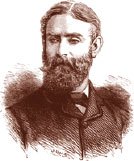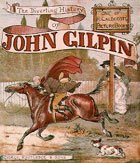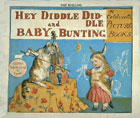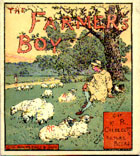 |
 |
 |
 |
Randolph Caldecott, born March 22nd, 1846, whose drawings show energy, humor, and mischief, is still upheld as the model for illustrators of children’s books. Caldecott, Greenaway, and Walter Crane ushered in the golden age of book illustration.
Discouraged from art by his father, Caldecott became a banker, but colleagues often found sketches of dogs and horses among his bills and ledgers. He began to take art classes on the side and published his first drawings in 1872. He illustrated travel books as it allowed him to travel to warmer climates for his continued ill health during English winters. Printer Edmund Evans convinced him to team up and begin work on what became sixteen picture books for children. The first was The Diverting History of John Gilpin, published in 1878.
Caldecott exhibited skilled draftsmanship, with as much care for detail as with the empty space on the page. He began with a blank book of the right size and number of pages and planned what text and illustration would fall on each page. Then he began to draw. He never fussed with corrections. If he made a mistake, the drawing was tossed aside and started again. He would then send the finished art to Edmund Evans, who, with his team of engravers, would oversee the printing production. They hand engraved the drawings and color separations onto separate pieces of boxwood, sometimes as many as six wood block plates to create a single illustration.
Caldecott’s timeless ability to extend text in unique and surprising ways is why the award for “the most distinguished picture book illustration” is in his name. He died in 1886.
— Karen Ritz
